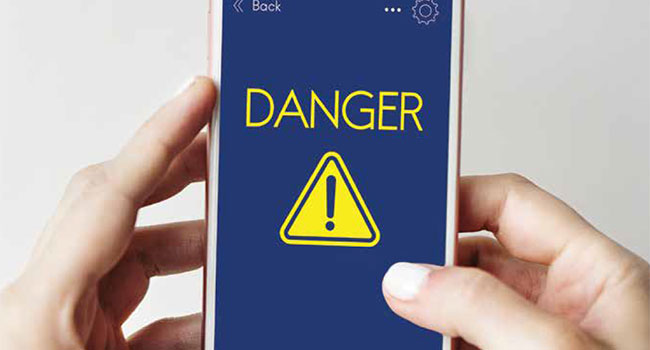
Message Received
Technologies have changed in the industry for the better
- By Noah Reiter
- February 01, 2020
There is little debate as to whether the introduction of
new emergency communications technologies have
changed the industry for the better. New technologies
allow first responders to have more information available
to them, making them better prepared when
responding to emergencies. Response times have also decreased
thanks to more accurate location data, better information and quicker
communications.
Important Information
Similarly, there are also more channels to reach the public than ever
before, which makes it easier to get residents important information
in the event of severe weather, active shooter incidents or other
emergencies.
Yet, even with all the new modes of communicating with each
other and the public, emergency officials still are faced with the challenge
of making sure their messages are received. People are often
overwhelmed with the amount of information they receive on a daily
basis, making it hard to ensure important messages are received.
This is especially true of those on college campuses or in schools,
where students are always connected and digesting mass amounts of
information day in and day out—from sources that may or may not be reputable.
This factor makes segmentation features a
crucial aspect to today’s new emergency
technologies. The ability to segment populations
can help avoid alert fatigue, ensure the
message gets to the correct people and build
credibility as an institution.
Information Overload
On average, Americans spend more than 11
hours a day consuming some form of media.
We send and receive about 94 text messages
and receive about 122 emails every day.
We are living in an age of information and
message overload. With so many different
communications being sent and received
across multiple channels and platforms, it is
easy to become numb to auto-messages from
organizations, especially when they are not
relevant to the recipient.
On college campuses where students are
also burdened with classes, homework, friends
and extracurricular activities, it can be even
more of a challenge to get messages read in the
first place, never mind ensuring the information
is digested and understood. However, in
times of emergencies, like severe weather or an
active assailant, these messages can be critical
to a student’s safety and wellbeing.
Cut Through the Noise
Higher education institutions and other
organizations should want to give people
enough information without overwhelming
them to the point of tuning the messages off
or even unsubscribing. More sophisticated
emergency notification technologies have
developed segmentation capabilities to
accomplish this feat.
Segmentation allows institutions to split
their databases into groups of individuals
depending on their role, location or other
attributes. By dividing a population into segmented
groups, organizations reduce the
number of messages sent and received, while
also ensuring the message is relevant to those
receiving it. If messages are not relevant, it
becomes easier to ignore them. However, if
only the people who need the message are
targeted, it increases the likelihood that the
message will be received, and the information
will be acted upon.
Maximizing the open rates of messages
can be incredibly important on campuses,
especially during emergency situations. In
the case of the Medical University of South
Carolina (MUSC), the school was able to
keep students, staff and faculty informed
during Hurricane Florence through their
use of group segmentation. While everyone
received general weather updates on a regular
basis, they split their audience into
unique groups which led to higher engagement,
so more people got the information
relevant to their safety. Students were sent
messages assuring them of their safety and
keeping them informed with updates relevant
to the area where they lived. Meanwhile,
on-site medical center staff were
sent separate notifications about sleeping
accommodations, complimentary meals
and off-duty activities such as movies and
karaoke.
Likewise, message design should also be
consistent and appropriate to the given audience.
When inboxes are overflowing with
messages that look and feel similar, a distinct
message will stand out, increasing the likelihood
that recipients will pay attention to it.
Design is a critical aspect in signaling to
recipients a message is important and issued
by a trusted source.
Build Credibility and Deliver the
Right Message to the Right People
By only sending relevant messages, organizations
not only increase safety on campus, but
also build credibility with the community
they serve.
Too many general messages that only
relate to a small fraction of the community
can often be categorized as spam by recipients.
If messages consistently provide useful
and relevant information, recipients will
learn the message sender can be trusted and
should be paid attention to. Segmentation
also allows institutions to spoon feed rather
than firehose information: by giving just
enough information and allowing students
to figure out what action they need to take
next, such as evacuate or shelter in place,
they become more engaged in the messages
and their safety.
Reliability is key to building credibility.
Guaranteeing the message will be delivered
no matter what channel or where students
and staff may be located on campus, can
make a difference in not only protecting
students, but also having them trust the
institution and the message they are sending.
For example, MUSC encouraged the
students and staff to register a secondary,
non-university affiliated email address on
their alerting system. Having this type of
backup system in place ensured that community
members still received updates
regardless if they were logged into a campus
email. A notification during an emergency
is only effective if it is received, read and
acted upon by the recipient. Getting the
right message to the right people at the
right time is critical to ensuring good outcomes
for organizations and the people they
are responsible for protecting. With the
right plan and technology in place, organizations
can better protect the communities
that rely on them every day.
This article originally appeared in the January / February 2020 issue of Campus Security Today.